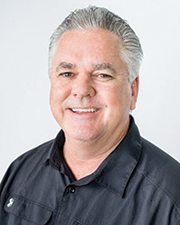


The future of mobility is quickly moving away from vehicle ownership and more towards access to convenient and reliable transportation.1 This trend places an even greater emphasis on how communities of the future should be built today to provide residents with an alternative mode of connectivity to retail, restaurants, health services, businesses, entertainment and schools. Now, more advanced community amenities like driverless shuttles are being incorporated into live-work-play developments to address the shift taking place in how people seek to connect from A to B.
A recent industry survey illustrates the opportunities and benefits in creating and implementing a better way to seamlessly connect people and places. The online survey presented questions to more than 2,500 builders and developers throughout the U.S. to take the pulse on current and future plans for community-based transportation services.
Breaking Down the Results: The survey data shows more than one-third of builders and developers currently have some form of community-based transportation service while another 12% say they’re currently planning the implementation of these services. Of the services provided bikes, shuttles, and electric scooters make up the largest types of transportation options.
As many builders look to implement new modes of alternative mobility in their communities, those who do believe that community-based transportation and/or innovations such as driverless shuttle services would add value to the homes in their communities. More than two-thirds of builders and developers responded that it would add value and half of those polled believe this could bring an additional 4% - 6% increase in home values within the community.
It’s one of the driving factors builders see as an attractive and unique service feature for potential new residents. 56% of builders and developers believe new resident attraction represents the largest motivating factor for the implementation of such mobility systems, followed by enhanced services for residents (52%), and added overall revenue (50%).
Additionally, this will improve safety in these communities by reducing road congestion while also positively impacting the environment by using electric shuttles in place of gasoline powered personal transportation.
Benefits of Community-Based Transportation Realized: Master planned communities like Tradition and Lake Nona in Florida represent the rise in builders and planned developers who value the importance of community-based services. Specifically, their autonomous mobility networks are improving connectivity, attracting new home buyers, increasing home values and reducing the need for personal transportation.
Mattamy Homes, the largest privately owned homebuilder in North America and the leading developer in Tradition, developed alternative mobility solutions for residents, employees and visitors to move around the community to connect residential living, retail, restaurants and recreational areas. The initial implementation of community-based transportation utilizing driverless shuttles consists of two routes with four stops serving three key destinations in Tradition, including The Landings retail center, Town Square and their new Manderlie development.
In the first six months of service, Mattamy Homes effectively created a sustainable and safer mode of transportation that reduced the equivalent of nearly 2,300 vehicle trips in the community. By transporting thousands of passengers in the initial months of service with 100% electric driverless shuttles, Tradition moved more people with fewer vehicles and reduced its carbon footprint.
Through a phased approach and through a combination of public roads and dedicated infrastructure in the future, Tradition will continue to expand its autonomous mobility services alongside its nearly 20 miles of experiential trailheads, which will include stops at the Cleveland Clinic Tradition Hospital, the future sites of The Stars and Stripes park, an iconic heart-shaped art installation, future commercial shopping centers, schools and medical facilities in the development. Each of the stops along the trailhead will be accessible by the autonomous shuttles service with a designated stop. Upon completion of the development the community will consist of 12 total residential communities at full buildout.
Growing Importance: In summary, as more people move away from city centers and more toward live-work-play communities, those with walking trails and dog parks, and athletic amenities like tennis and basketball courts, and community pools increase property values.2 The results obtained from this industry survey also clearly indicate that communities with a better and safer way to get around attract more home buyers, increase home values and provide a level of mobility-for-all for those seeking and needing it.
Joe Moye is the CEO and Board Director at Beep, Orlando, Fla. Dan Grosswald is the Mattamy Homes Division President for South Florida, Boynton Beach, FL
1. Shift from Ownership to Access Is Shaping the Future of Automotive - Cox Automotive Inc. (coxautoinc.com)
2. https://www.trulia.com/blog/features-increase-property-values-in-my-neighborhood/



